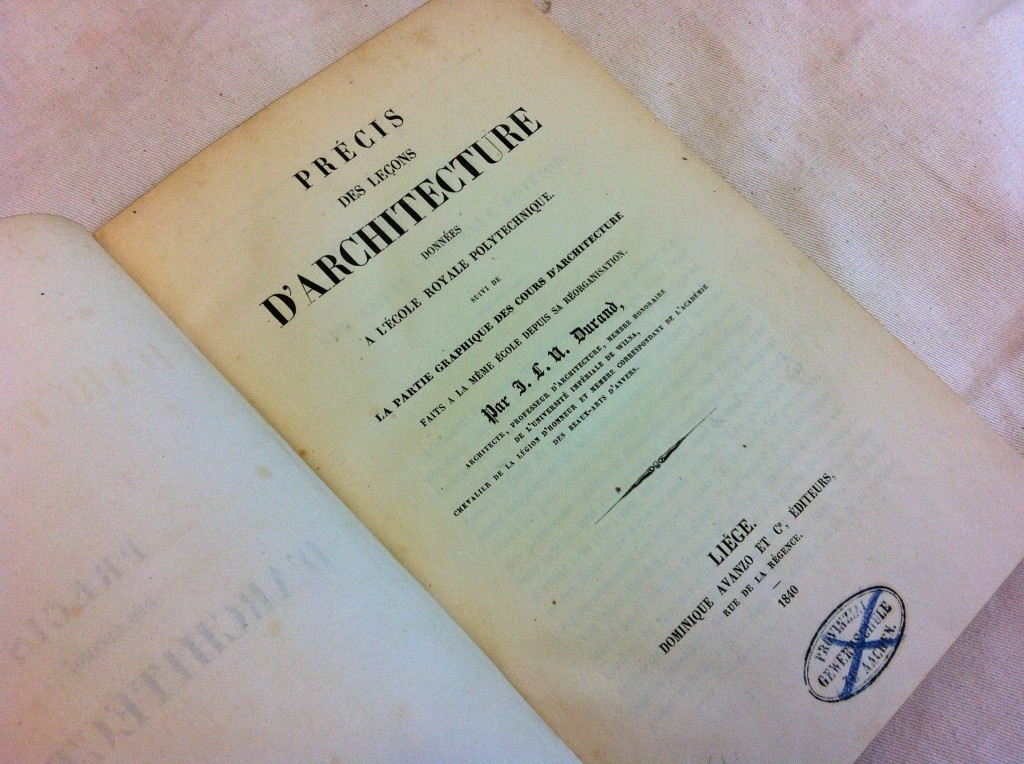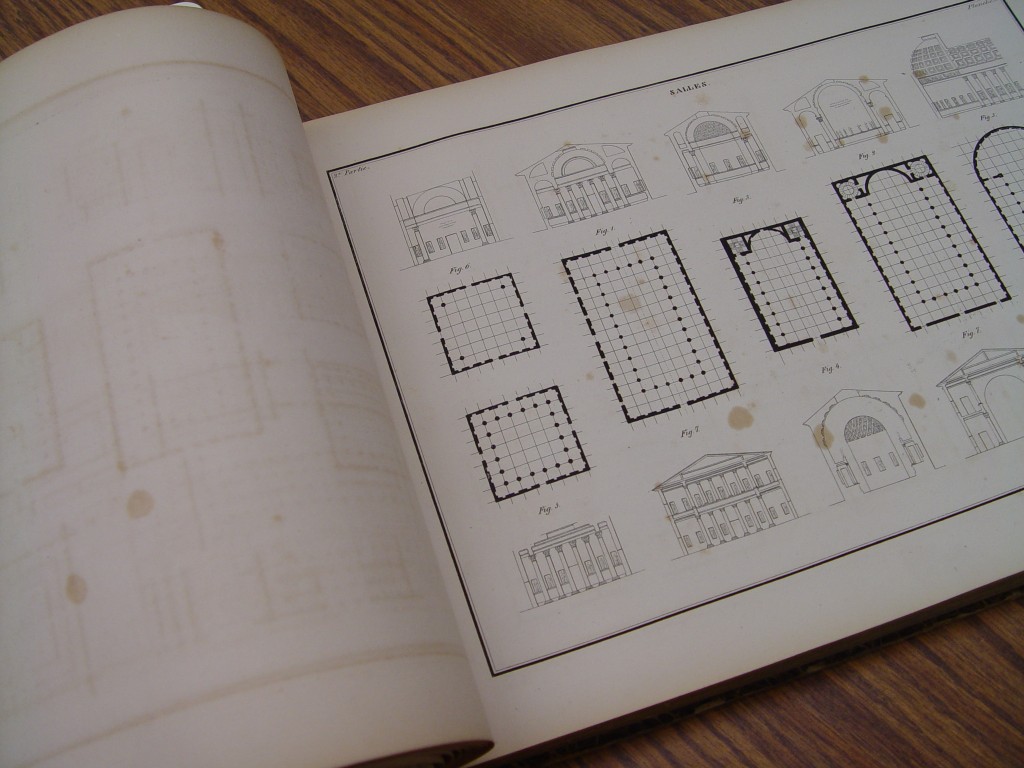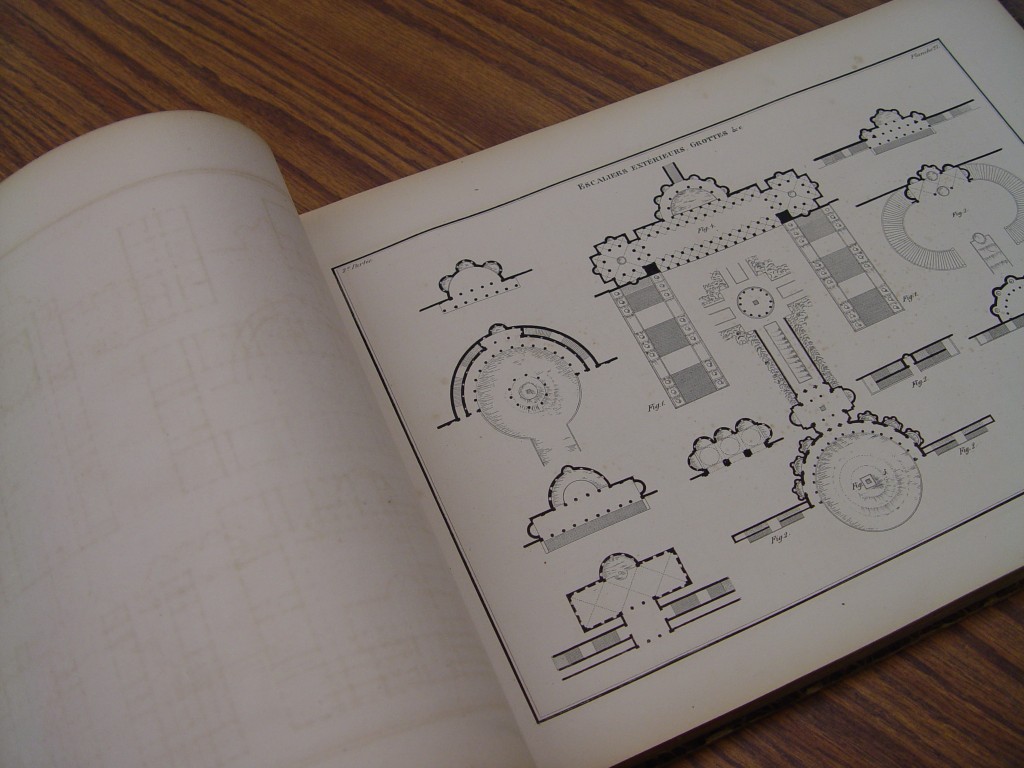Durand, Jean-Nicolas-Louis. Précis des leçons d’architecture données à l’Ecole royale polytechnique. Liège, Belgium: D. Avanzo, 1840-1841.
Collection: Paul Phillipe Cret Library
In Précis des leçons d’architecture données à l’Ecole royale polytechnique, Jean Durand outlines the comprehensive methodology he established to train young architects studying at the Ecole. To guide the effective analysis of architecture and development of building projects, Durand explains the basic components comprising a structure (e.g., material, architectural elements, etc.), their relationship to one another (e.g., proportion, etc.), the basic means of assembly (i.e., construction practices through masonry, carpentry, etc.), and the methods of communicating design through plans. Durand also discusses typology, examining buildings in context to establish certain principles for designing and constructing public buildings and those private buildings appearing in various settings. In this section, Durand begins to imagine buildings as systems of modules, an approach that prefigures later modernist attempts to modularize the design process. As a result, the Précis establishes itself within the great lineage of architectural primers while incorporating the industrializing tendencies of its time to usher a practice deeply rooted in tradition into a mechanized era.
When I reviewed this book in order to write this entry I came across a note deposited by a former reader, whose preoccupation with the use of certain materials is marked by an interest in currying new business and collecting design fees. From time to time, such ephemera appears, and though it typically offers little or no insight into the specific intersections that produced it, its very presence provokes the imagination.
Library of Congress call number: NA 2520 D931 1840 (Atlas and Text)





